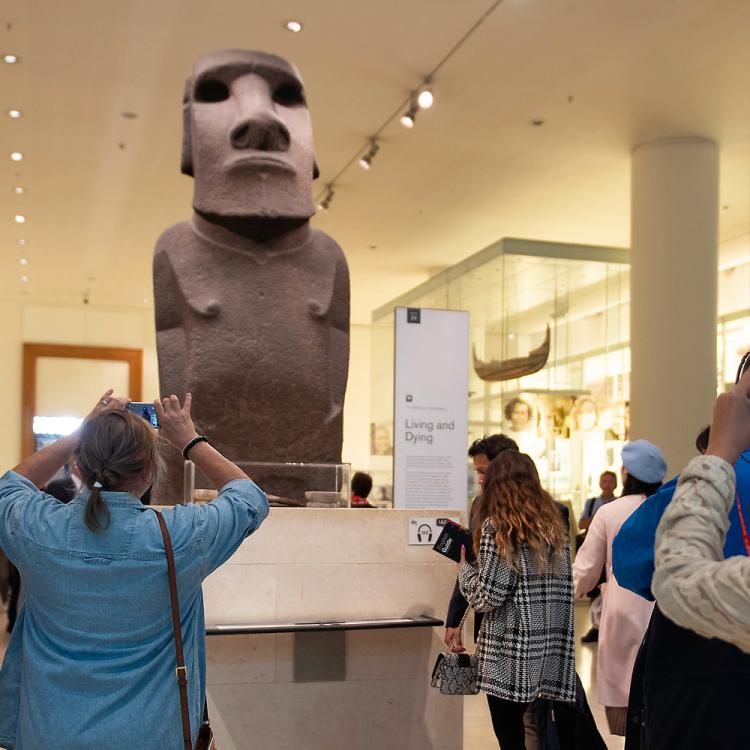Visiting the gallery
Opening times
Daily: 10.00–17.00 (Fridays: 20.30)
See full opening hours
Advance booking advised
Gallery audio guides
Listen on the Audio app, available on the App Store and Google Play.
This gallery explores how people everywhere deal with the tough realities of life and death.
These challenges are shared by all, but strategies to deal with them vary from place to place, people to people.
The central installation by Pharmacopoeia, called Cradle to Grave, looks at an approach to health and wellbeing, describing the medical histories of a typical man and woman in Britain today.
People throughout the world deal with the tough realities of life in many different ways. The displays in Room 24 explore different approaches to our shared challenges as human beings, focusing on how diverse cultures seek to maintain health and wellbeing.
Take a virtual tour
Discover a fascinating collection of objects that explore living and dying across the world in Room 24, including Hoa Hakananai'a from Easter Island.
Living with land and sea: Peru and the Andean world
The Central Andean region in South America is home to one of the richest and most challenging environments on the planet, comprising oceans, deserts, high mountains and tropical forests. Over thousands of years, people and communities have created ways to thrive in these diverse landscapes, developing unique ways of living and of understanding the world around them.
Explore Peru and the Andean world through the perspectives of its artists, farmers, rulers, seafarers and other inhabitants. This display showcases ceremonial objects, such as a child's tunic decorated with fish appliqués that are made of Spondylus and Strombus shells. Also exhibited are painted, modelled and woven images of figures steering reed boats, which were used to communicate narratives that helped people understand the world they lived in.
Today, these communities, their way of life and their legacies are at risk from climate change and increasing overfishing. The Peruvian sea has one of the richest marine ecosystems in the world and provides a diverse array of marine life. However, this resource is limited and requires a more sustainable approach to the environment to ensure the preservation of species.
Many of the objects in the display were and are still recognised as living beings playing an active role in special ceremonies of healing and securing balance in the world. Discover how the communities of the Central Andean region have kept their environment at the heart of their wellbeing – as well as using it for their protection and survival.
The Trustees of the British Museum acknowledge with gratitude the generosity of Madeleine Osterling Letts, Macarena Rojas Osterling and Cristina Rojas Osterling, alongside the continued support of PROMPERÚ, in creating this display and promoting the Peru programme.
Supported by
Accessibility
- Large print guides are available on: Australia, New Zealand – Maori, Peru and the Andean world and Amazonia.
- Some objects in this collection feature on the British Sign Language multimedia guide. This resource is temporarily unavailable. You can access a selection of BSL films on your own device.
- Some objects in this collection feature on the audio description guide, available on Soundcloud.
- Seating is available.
- Step-free access.
- View sensory map.
Visit Accessibility at the Museum for more information.












